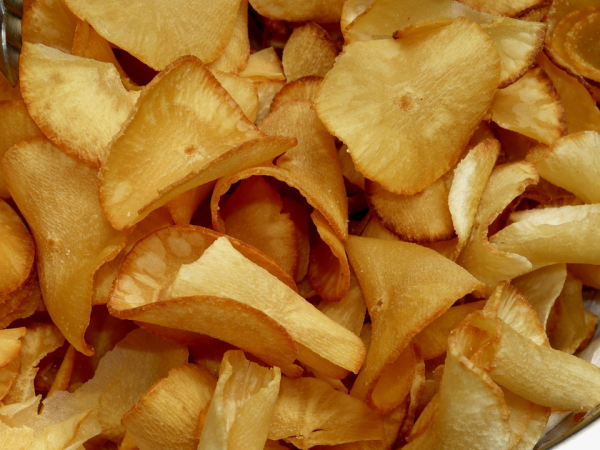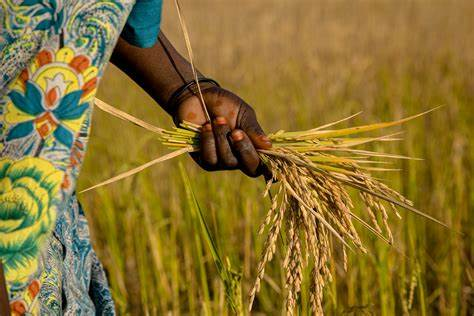How To Start Cassava Chips Business For Export
Cassava can be processed in a variety of ways to arrive at different products including as garri, fufu, lafun, starch, chips and pellets, etc.
Cassava chips are unfermented white dried products of cassava with an average diameter of 3mm – 5mm often used as a carbohydrate base in the animal feed industry particularly in Europe, or milled into flour for other uses such as in the production of ethanol, cakes, dough nut and biscuits.
The demand for Cassava Chips as an industrial product is wide. It cuts across so many industries such as distilleries, pharmaceutical, food and most especially the animal feed industry. The estimated demand for Cassava Chips in Nigeria was found to be in excess of 1,500,000T/annum.
Cassava chips could also be used in livestock feed. Many cassava chips factory choose to process cassava chips for export. Formulation of livestock feed based on cassava with other enrichment ingredients such as maize was also proposed. However, this needs to be based on least costs formulation approach. It was observed that an interplay of factors would generally be the ultimate determinant of price.
As recommendations, it was proposed that: There is need for sensitization on the utility of some feed products in the market ; Use of cassava-whole plant silage technology should be explored as an opportunity for possible exploitation at small scale feed production level; There is need of bringing processors and farmers together through existing of new organizations as useful in supply chain management; There is need for enhanced coordination of cassava industrialization initiatives in the country; As an R&D issue, focus should be placed on use of parboiled cassava to be dried and cut into chips.
Prospects In Cassava Chips Business
Tuber cassava retains assortments that make it look Hot cake These include chips, flakes, cubes, peeler, starch and flour, pellets, etc. Many European and American countries, including: Germany, UK, France, the Netherlands among others demands huge quantities of processed cassava products annually. In fact, the use of cassava for mixing live stock feed is now in vogue in Europe, this has gain wide acceptance to an extent of recent release of European Economic Community of import of over 10 million metric tonnes per annum.
Apart from livestock feeds, processed cassava serves as industrial raw material for the production of adhesives bakery products, dextrin, dextrose glucose, lactose and sucrose. Dextrin is used as a binding agent in the paper and packing industry and adhesive in cardboard, plywood and veneer binding.
Food and beverage industries use cassava products derivatives in the production of jelly caramel and chewing gum; pharmaceutical and chemical industries also use cassava alcohol (ethanol) in the production of cosmetics and drugs. The products also find ready use in the manufacture of dry cell, textiles and school chalk etc. Cassava cubes are used mainly in the compounding of livestock feeds. Thus there is a very high demand for cassava products in both the local and export markets.
Other benefits of cassava chips production
The international price of cassava chips fluctuates between $1, 200 and $1,300 per metric tonne. Locally, it is sold at N120, 000 per tonne.
The above facts make the project to be socially desirable and economically viable. It is also technically feasible and highly profitable. With a good management and marketing approach, a minimum profit margin of N20,000 is obtainable from producing a tone of good quality Cassava chips.
The project researched on targets a minimum processing capacity of 102tones per day, which implies an average production output of 25tones per day. This gives a minimum profit margin of N500, 000 which translates to N14, 000, 000 monthly.
However, the processing and production capacity of the plant can be doubled if the factory operates a two shift program. This by extension doubles the profitability of the venture.
How to process cassava chips for export?
Cassava peeling: Production of cassava chips starts with the peeling of the cassava. Peeling can be done mechanically or manually. Mechanical peelers peel as much as 2,400 –2,500Kg per hour with a wastage rate of 30-40% while manual peeling does 22Kg per man hour and wastage of 20-25%.
Mechanical peelers are problematic because of the non-uniform nature of the cassava roots and the irregularity in size which make smooth peeling difficult. Also, the thickness of the skin, the texture and the strength of adhesion to the flesh of the tuber differ from specie to specie thereby making over-peeling and under-peeling possible. As a result of these problems, processors prefer manual peeling for now till the mechanical is perfected.
Cassava washing: The peeled tubers are thoroughly washed to remove all dirt and sand that may adhere to them. Export requirements insist that sand content should not be more than 2%.
Cassava chipping: The washed tubers are carted to the chipping machines where they are chipped into small chips of about 1-2 centimetre thickness and 6-7 cm long. The sizes at times depend on the prescription of the order.
Cassava chips drying: The wet chips are taken to the Rotary Dryer where they are dried to 12-14% moisture content.
All rights reserved. This material, and other digital content on this website, may not be reproduced, published, broadcast, rewritten or redistributed in whole or in part without prior express written permission from KINGS COMMUNICATIONS LIMITED.









Thank you for this piece. Will it be possible to have an updated version.
Where can we get locally a Cassava Chipping Machinery in Nigheria?